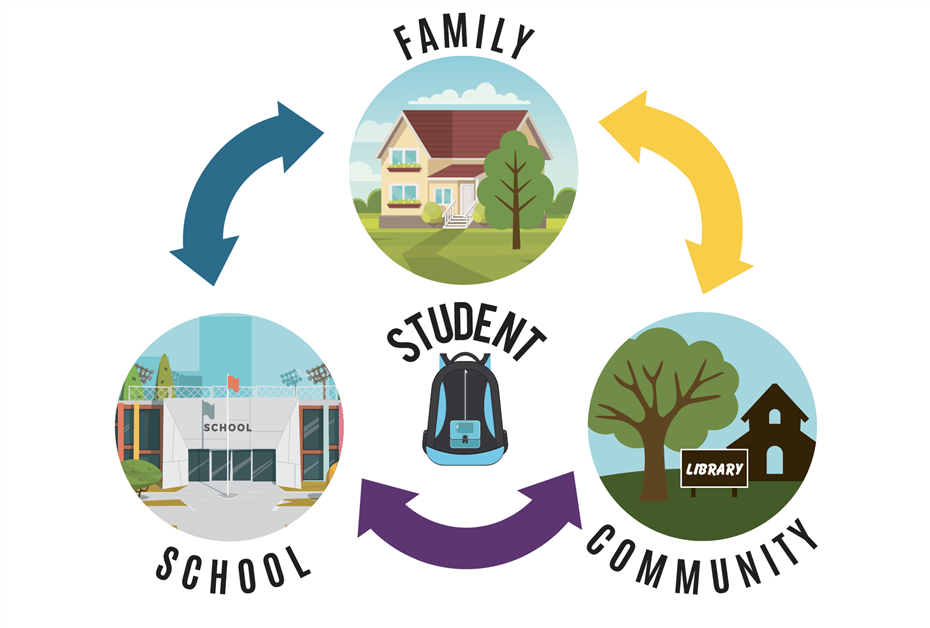A strong partnership between schools and communities plays a crucial role in enhancing student success, improving educational experiences, and creating a supportive environment for all stakeholders. When schools collaborate with families, local businesses, nonprofit organizations, and civic leaders, they build a network of support that benefits students academically, socially, and emotionally.
But what does effective school-community engagement look like? How can schools strengthen relationships with families and local organizations to improve education?
In this guide, we will explore:

- What is school-community engagement?
- The benefits of strong school-community relationships.
- Challenges in fostering engagement.
- Effective strategies for improving school-community collaboration.
- Examples of successful school-community initiatives.
What is School-Community Engagement?
School-community engagement refers to the collaboration between schools, students, families, businesses, and community organizations to support and enhance education.
This partnership can take many forms, including:
- Parental involvement in school activities and decision-making.
- Business and nonprofit partnerships that provide resources and funding.
- Volunteer programs where community members contribute time and expertise.
- After-school programs and mentorship initiatives.
- Community-based learning opportunities like field trips and service projects.
📌 Why It Matters: Students thrive when they see that their education is valued beyond the classroom.
Benefits of Strong School-Community Collaboration
When schools and communities work together, everyone benefits—students, teachers, parents, and the wider community.
📚 1. Improved Academic Achievement
✔ Community involvement in education has been shown to boost student performance.
✔ Programs like after-school tutoring, mentorship, and STEM initiatives provide additional learning opportunities.
📌 Example: A local business might sponsor STEM workshops to help students develop coding and engineering skills.
🏆 2. Increased Student Engagement & Motivation
✔ Students feel more connected to their education when they see real-world applications of what they learn.
✔ Engaging guest speakers, career days, and local field trips make learning exciting and relevant.
📌 Example: A local artist visiting an art class to teach mural painting inspires creativity and career exploration.
🤝 3. Stronger Support Systems for Students & Families
✔ Schools that partner with healthcare providers, food banks, and counseling services ensure that students have holistic support.
✔ Parent workshops and community resource centers help families navigate education challenges.
📌 Example: Schools collaborating with local food banks to provide meals for students facing food insecurity.
💰 4. More Resources & Funding for Schools
✔ Local businesses and nonprofits often sponsor school programs, donate technology, or provide grants.
✔ Fundraising events with community participation help bridge budget gaps.
📌 Example: A tech company donating laptops to underfunded schools to support digital learning initiatives.
🌍 5. Enhanced Civic Engagement & Social Responsibility
✔ Students who engage in community service and real-world projects develop a sense of civic responsibility.
✔ Schools that encourage volunteering promote leadership, empathy, and teamwork.
📌 Example: High school students working on a community garden project learn about sustainability and teamwork.
Challenges in Building School-Community Partnerships
Despite the benefits, many schools struggle to establish strong community engagement due to:
🚧 1. Lack of Communication & Awareness
✔ Many parents and community members aren’t aware of opportunities to get involved.
✔ Schools may fail to actively reach out to businesses and organizations.
📌 Solution: Schools should use newsletters, social media, and town hall meetings to improve outreach.
🚧 2. Time Constraints & Busy Schedules
✔ Parents and community members often have limited time to participate.
✔ Schools need to offer flexible engagement opportunities.
📌 Solution: Organize virtual meetings, weekend events, and short-term volunteer opportunities.
🚧 3. Cultural & Language Barriers
✔ Non-English speaking families may feel excluded from school activities.
✔ Schools may not reflect the diversity of the community in their engagement efforts.
📌 Solution: Provide bilingual resources and translators to make communication more inclusive.
🚧 4. Lack of Funding for Community Programs
✔ Schools may struggle to secure resources for extracurricular activities and partnerships.
✔ Businesses and organizations may hesitate to commit financial support.
📌 Solution: Apply for grants, crowdfunding, and corporate sponsorships to fund community programs.
Strategies for Strengthening School-Community Engagement
✅ 1. Create a Welcoming & Inclusive School Culture
✔ Host “Back to School” community events to welcome parents and local leaders.
✔ Develop a Family & Community Engagement Team to foster partnerships.
📌 Example: A school hosting a “Multicultural Night” where families share traditions, food, and performances.
✅ 2. Develop Strong Communication Channels
✔ Use newsletters, social media, text alerts, and community forums to share school updates.
✔ Provide bilingual translations for non-English speaking families.
📌 Example: Schools creating WhatsApp groups for parents to receive real-time updates.
✅ 3. Encourage Parental Involvement in Decision-Making
✔ Invite parents to join school committees and PTA meetings.
✔ Offer flexible volunteering opportunities (e.g., virtual parent-teacher conferences).
📌 Example: A school allowing working parents to participate in parent-teacher meetings via Zoom.
✅ 4. Partner with Local Businesses & Organizations
✔ Invite local businesses to sponsor school programs (e.g., coding clubs, sports teams).
✔ Encourage businesses to offer internships or job-shadowing opportunities for students.
📌 Example: A local restaurant partnering with a school to offer culinary training for students.
✅ 5. Implement Service-Learning & Community Projects
✔ Encourage students to participate in community service initiatives.
✔ Design school projects that address real community issues (e.g., environmental conservation, homelessness awareness).
📌 Example: High school students launching a recycling campaign in collaboration with city officials.
Real-World Examples of Successful School-Community Engagement
📌 1. Harlem Children’s Zone (New York, USA)
✔ Provides wraparound services, including education, healthcare, and social support for families.
✔ Engages the entire community to break the cycle of poverty through education.
📌 2. Chicago Public Schools & Google Partnership
✔ Google donates Chromebooks and coding courses to underfunded schools.
✔ Students gain tech skills for future career opportunities.
📌 3. The Parent-Teacher Home Visit Project (USA)
✔ Teachers visit students’ homes to build strong relationships with families.
✔ Helps reduce absenteeism and improve student performance.
Conclusion: A United Effort for Better Education
When schools and communities work together, students thrive. Strong engagement fosters academic success, social responsibility, and lifelong learning. By improving communication, encouraging partnerships, and promoting inclusion, schools can build a supportive knowledge, thriving educational environment for all.
💬 What school-community initiatives have you seen in your area? How can schools improve collaboration? Share your thoughts below! 🏫🤝✨

